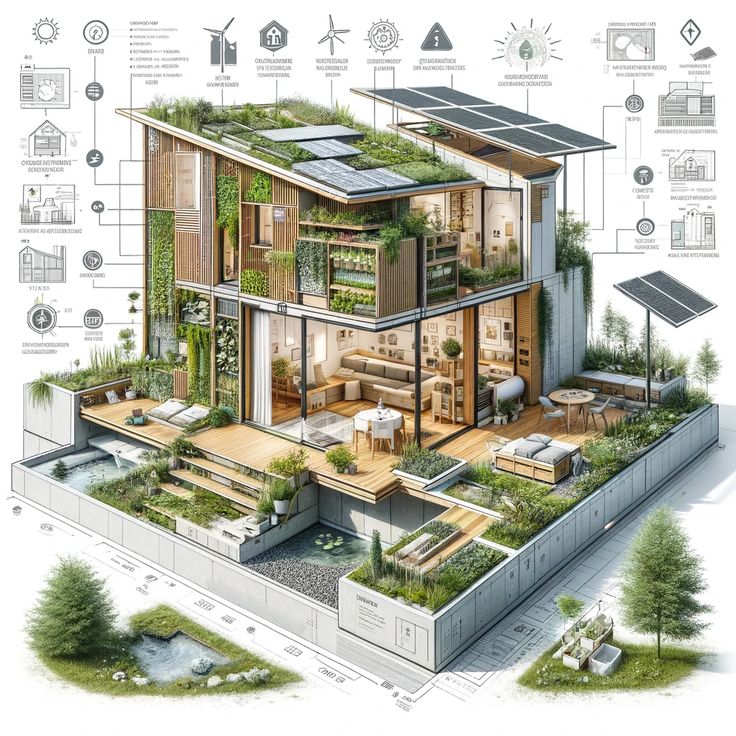
Beautiful Plants For Your Interior


In a world increasingly affected by climate change and urban stress, the idea of an eco garden is no longer just a trend—it’s a necessity. An eco garden, powered by nature, blends sustainability with serenity, turning your outdoor space into a living system that works in harmony with the Earth. Whether you’re cultivating a small patio garden or transforming a backyard into a green sanctuary, nature offers all the tools you need—sun, soil, water, and life.
Sunlight is one of the most powerful and free energy sources. In an eco garden, natural sunlight becomes the engine that powers everything—from plant growth to energy collection.
Smart Plant Placement: Understand which parts of your garden receive full sun, partial shade, or full shade. Place sun-loving vegetables like tomatoes or peppers where they can soak up 6-8 hours of light daily.
Solar Lighting: Replace electric garden lights with solar-powered ones. They charge during the day and light up your garden at night without increasing your electricity bill.
Greenhouses: Consider a small solar greenhouse to extend your growing season without artificial heating.
Water is life, but in eco gardening, how you use it matters.
Rainwater Harvesting: Install rain barrels or water tanks to collect and store rainwater from your roof. This free resource can be used for watering plants during dry spells.
Drip Irrigation Systems: These systems deliver water directly to the plant roots, minimizing evaporation and runoff.
Mulching: Applying mulch around plants reduces moisture loss, suppresses weeds, and regulates soil temperature.
Greywater Use: Reuse water from your sinks or washing machine (using eco-friendly soap) to water non-edible plants.
Healthy soil is not just dirt—it’s a complex, living ecosystem.
Composting: Convert kitchen scraps, leaves, and garden waste into rich, organic compost. Compost adds nutrients to the soil, improves its structure, and reduces the need for chemical fertilizers.
No-Dig Gardening: Minimize soil disturbance to protect underground microbial life. Layer compost and organic matter on top of the soil instead of tilling.
Cover Crops: Grow plants like clover or rye in the off-season to enrich the soil and prevent erosion.
An eco garden thrives when it is teeming with life—not just plants, but insects, birds, and small animals that create a balanced ecosystem.
Pollinator Plants: Grow flowers like lavender, echinacea, and marigolds to attract bees, butterflies, and hummingbirds.
Birdhouses and Insect Hotels: Provide shelter for helpful species. Ladybugs, for example, control aphid populations naturally.
Native Plants: Choose species that are adapted to your local climate and soil. They require less water, fewer fertilizers, and support local wildlife.
Sustainability is about using what you already have—and using it creatively.
Upcycled Planters: Use old buckets, wooden crates, or broken furniture as plant containers. This adds character to your garden while reducing waste.
Reclaimed Materials: Build raised beds or fences using salvaged wood or bricks.
Tool Swap: Join community gardening groups to share tools, seeds, and knowledge.
One of the best ways to harness nature’s power is to grow what you eat.
Herb Gardens: Start small with easy-to-grow herbs like basil, mint, and rosemary.
Vegetable Beds: Practice crop rotation and companion planting to boost yields and prevent pests.
Fruit Trees and Vines: Grow apples, lemons, or grapes depending on your climate zone.
Zero Pesticides: Use natural pest control methods like neem oil, garlic spray, or introducing beneficial insects.
An eco garden doesn’t just benefit your home—it contributes to the health of the planet.
Carbon Capture: Plants absorb CO₂ and store it in roots and soil. The more green space you create, the more carbon you capture.
Local Food Production: Growing your own food reduces the need for long-distance transportation, packaging, and plastic waste.
Green Waste Reduction: Composting and using garden waste wisely prevents organic matter from ending up in landfills, where it produces methane gas.
An eco garden also serves as a sanctuary for the soul.
Mindfulness and Gardening: Spending time planting, watering, and harvesting can reduce stress, improve mood, and enhance mental clarity.
Outdoor Living Spaces: Add a bench, hammock, or yoga mat to create a quiet retreat surrounded by greenery.
Sound and Scent: Incorporate wind chimes, water features, and fragrant herbs like jasmine or chamomile to engage all senses.
You’re not alone on your eco garden journey. Connecting with others multiplies the impact.
Workshops and Garden Clubs: Learn new techniques and share your experiences.
Seed Swaps and Plant Exchanges: Trade varieties you don’t need for ones you’d love to grow.
Online Platforms: Follow sustainable gardening blogs or social media pages to stay inspired.
Creating an eco garden powered by nature isn’t just about planting pretty flowers—it’s about giving back to the Earth while enriching your life. Every decision, from the pot you choose to the insects you welcome, plays a role in building a sustainable future. With sunlight, soil, water, and your intention, you can grow a garden that thrives—naturally.
这是测试文本,单击 “编辑” 按钮更改此文本。
